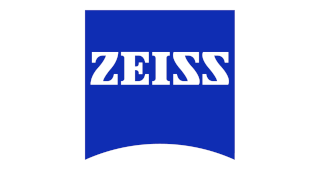Enlarged Suprameatal Tubercle as the primary cause of trigeminal neuralgia: our 5-year experience of cases
EANS Academy. Malli A. 10/06/21; 339528; EP08020

Mrs. Antonia Malli
Contributions
Contributions
Abstract
Background: Classic trigeminal neuralgia is caused by vascular compression of the trigeminal nerve, while in secondary trigeminal neuralgia some of the causes that are commonly encountered are tumors of the cerebellopontine angle, vascular malformations, aneurysms and multiple sclerosis. The Suprameatal tubercle (SMT) is a known bony prominence located just above the internal acoustic meatus on the posterior surface of the petrous bone and when enlarged and hyperostotic, it can obscure the visual field upon microvascular decompression of the trigeminal nerve. However, there are very few studies reporting that an enlarged Suprameatal tubercle (SMT) could also be a potential primary cause of persistent trigeminal neuralgia when no other pathogenic factors can be identified.
Methods: In this retrospective study, we present our 5-year experience of cases that presented with an enlarged SMT as the main culprit of medical-refractory trigeminal neuralgia and had total remission of pain during follow-up after its resection. In this 5-year period, 98 patients with trigeminal neuralgia were surgically treated and in 10 cases only an enlarged SMT was identified compressing the nerve along its course to the porus trigeminus with no vascular complex presenting as an underlying pathology.
Results: After the drilling and resection of the tubercle, all 10 cases had remission of their pain postoperatively and during the 5-year follow-up. Only 1 out of 10 cases had partial remission of the pain and transient facial numbness, which resolved at 1-month postoperatively.
Conclusion: A large suprameatal tubercle should be evaluated preoperatively as a possible cause of trigeminal neuralgia due to its size,angulation and arachnoid adhesions to the V nerve when no vascular compression can be clearly identified.
Methods: In this retrospective study, we present our 5-year experience of cases that presented with an enlarged SMT as the main culprit of medical-refractory trigeminal neuralgia and had total remission of pain during follow-up after its resection. In this 5-year period, 98 patients with trigeminal neuralgia were surgically treated and in 10 cases only an enlarged SMT was identified compressing the nerve along its course to the porus trigeminus with no vascular complex presenting as an underlying pathology.
Results: After the drilling and resection of the tubercle, all 10 cases had remission of their pain postoperatively and during the 5-year follow-up. Only 1 out of 10 cases had partial remission of the pain and transient facial numbness, which resolved at 1-month postoperatively.
Conclusion: A large suprameatal tubercle should be evaluated preoperatively as a possible cause of trigeminal neuralgia due to its size,angulation and arachnoid adhesions to the V nerve when no vascular compression can be clearly identified.
Background: Classic trigeminal neuralgia is caused by vascular compression of the trigeminal nerve, while in secondary trigeminal neuralgia some of the causes that are commonly encountered are tumors of the cerebellopontine angle, vascular malformations, aneurysms and multiple sclerosis. The Suprameatal tubercle (SMT) is a known bony prominence located just above the internal acoustic meatus on the posterior surface of the petrous bone and when enlarged and hyperostotic, it can obscure the visual field upon microvascular decompression of the trigeminal nerve. However, there are very few studies reporting that an enlarged Suprameatal tubercle (SMT) could also be a potential primary cause of persistent trigeminal neuralgia when no other pathogenic factors can be identified.
Methods: In this retrospective study, we present our 5-year experience of cases that presented with an enlarged SMT as the main culprit of medical-refractory trigeminal neuralgia and had total remission of pain during follow-up after its resection. In this 5-year period, 98 patients with trigeminal neuralgia were surgically treated and in 10 cases only an enlarged SMT was identified compressing the nerve along its course to the porus trigeminus with no vascular complex presenting as an underlying pathology.
Results: After the drilling and resection of the tubercle, all 10 cases had remission of their pain postoperatively and during the 5-year follow-up. Only 1 out of 10 cases had partial remission of the pain and transient facial numbness, which resolved at 1-month postoperatively.
Conclusion: A large suprameatal tubercle should be evaluated preoperatively as a possible cause of trigeminal neuralgia due to its size,angulation and arachnoid adhesions to the V nerve when no vascular compression can be clearly identified.
Methods: In this retrospective study, we present our 5-year experience of cases that presented with an enlarged SMT as the main culprit of medical-refractory trigeminal neuralgia and had total remission of pain during follow-up after its resection. In this 5-year period, 98 patients with trigeminal neuralgia were surgically treated and in 10 cases only an enlarged SMT was identified compressing the nerve along its course to the porus trigeminus with no vascular complex presenting as an underlying pathology.
Results: After the drilling and resection of the tubercle, all 10 cases had remission of their pain postoperatively and during the 5-year follow-up. Only 1 out of 10 cases had partial remission of the pain and transient facial numbness, which resolved at 1-month postoperatively.
Conclusion: A large suprameatal tubercle should be evaluated preoperatively as a possible cause of trigeminal neuralgia due to its size,angulation and arachnoid adhesions to the V nerve when no vascular compression can be clearly identified.
{{ help_message }}
{{filter}}




